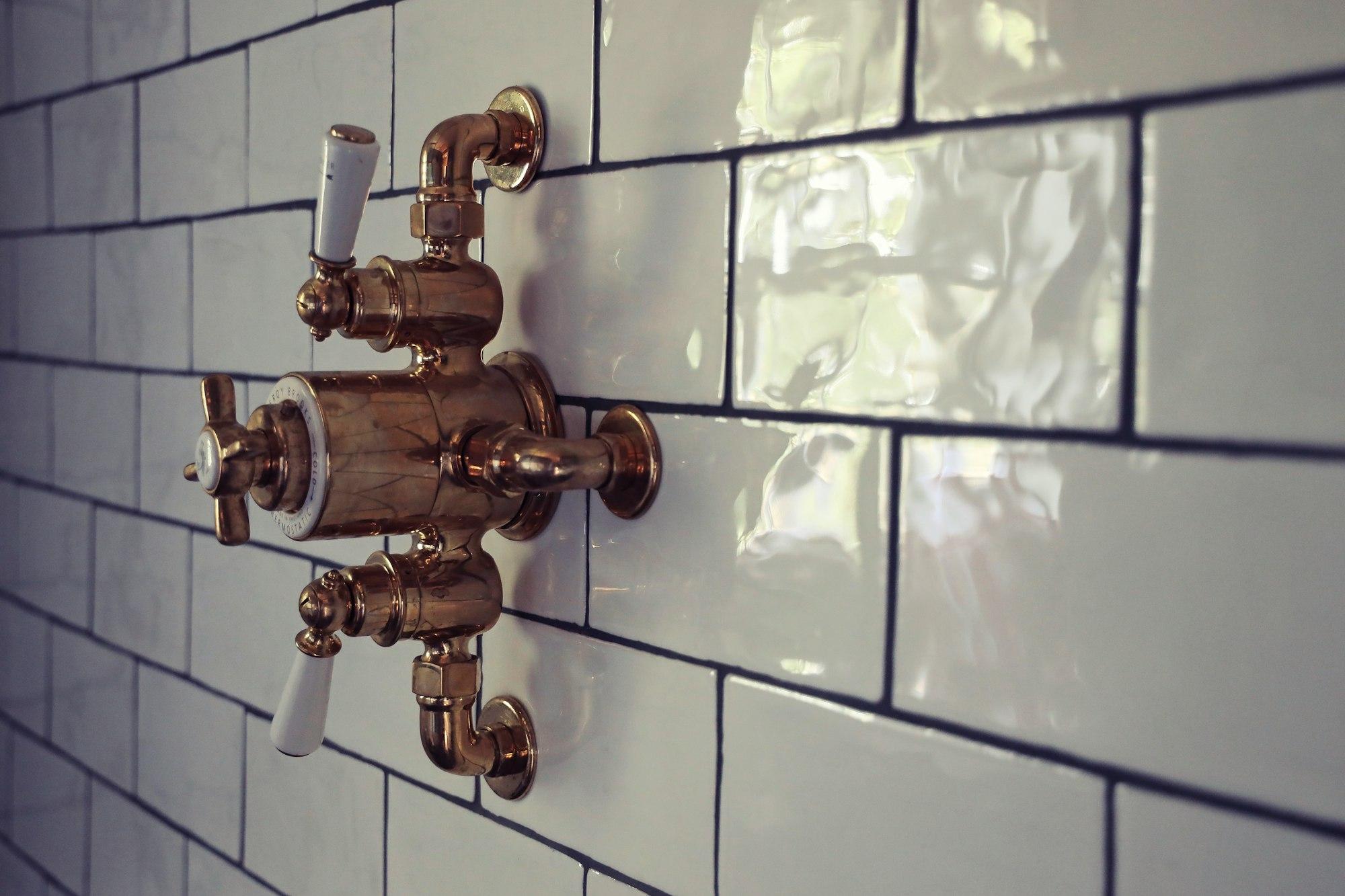6 Types of Shower Valves
Shower valves control water flow and temperature, with options like mixing valves, pressure-balancing valves, and thermostatic valves offering various features to enhance safety, comfort, and functionality.

Photo by Dan Counsell
The secret behind this seamless experience? A well-chosen shower valve that suits your home’s plumbing and personal preferences. Shower valves help control how hot and cold water mix, ensuring a comfortable and consistent showering experience. Whether you’re planning a full bathroom overhaul or a small refresh, understanding these valves can make a big difference.
If you’re exploring ways to improve your bathroom’s overall look and function, consider reviewing small bathroom design ideas to maximize space, or learn how to clean glass shower doors so your upgraded fixtures truly shine.
1. Mixing Valves
What They Are:
A traditional shower valve, mixing valves draw hot and cold water to the shower head from separate taps. They’re more common in older homes.
Pros & Cons:
They’re simple but can’t respond quickly to changes in water pressure. If someone flushes a toilet or runs a tap, you might experience a sudden temperature swing.
Tip: Setting your water heater thermostat to 120°F can help reduce the risk of scalding with a mixing valve system.
2. Pressure Balancing Valves
What They Are:
Also called mechanical or anti-scald valves, pressure balancing valves maintain consistent water temperature by adjusting to changes in water pressure.
Pros & Cons:
They’re common in modern homes and help keep water temperature within a few degrees, minimizing the risk of sudden bursts of hot or cold water.
Tip: Make sure your plumbing can handle these valves. Some older systems may not be compatible.
3. Thermostatic Valves
What They Are:
Thermostatic valves maintain both water pressure and temperature. They use an internal element that adjusts the ratio of hot and cold water based on your chosen temperature setting.
Pros & Cons:
Thermostatic valves allow you to pre-set your preferred temperature and can include features like volume control. They offer multiple configurations:
- Twin Thermostatic Valve: One handle controls temperature, the other turns water on/off for a single shower outlet.
- Twin Valve with Diverter: Perfect for a double showerhead setup. One handle changes temperature, the other switches between heads.
- Triple Thermostatic Valve: Three handles let you run two showerheads simultaneously, controlling temperature and flow separately.
- Triple Valve with Diverter: Handles three shower outlets, giving you full control over temperature, jets, and other fixtures.
Note: Thermostatic valves tend to be more expensive than pressure-balancing valves.
4. Diverter Valves
What They Are:
Diverter valves direct water flow in a tub/shower combo. They let you switch between the tub spout and showerhead.
Types of Diverters:
- Tee Diverter: A pull arm on the tub faucet diverts water upward when pulled.
- Two-Valve Diverter: Has separate controls for hot/cold and a secondary control to direct water to tub or shower.
- Three-Valve Diverter: Adjust hot/cold water independently, plus a central knob to shift flow from tub to shower.
5. Transfer Valves
What They Are:
Transfer valves send water to multiple outlets at once. For instance, you can use a handheld showerhead without turning off the main shower.
Pros & Cons:
Some transfer valves allow multiple shower components to run simultaneously. Newer models may have digital controls for advanced customization.
6. Manual Valves
What They Are:
Manual valves are straightforward and budget-friendly, typically with one handle controlling pressure, temperature, and on/off functions.
Pros & Cons:
They’re easy on the wallet but don’t compensate for sudden pressure or temperature changes elsewhere in the home’s plumbing.
Final Thoughts
Different shower valve types can help your home meet modern plumbing codes and enhance your daily routine. By understanding your options, you’ll be better equipped to upgrade or replace your shower valve, ensuring a consistent and comfortable shower experience every time.
Quick facts
What is the valve in a bathtub?
The valve in a bathtub controls water flow and temperature. It may also switch water between the tub spout and showerhead in some setups.
Can I replace a shower valve myself?
Yes, you can replace a shower valve yourself if you have plumbing experience. However, hiring a professional ensures proper installation and avoids damage.
How to tell if a tub valve is bad?
Signs of a bad tub valve include inconsistent water temperature, leaks, or difficulty turning the handle. These may indicate the need for repair or replacement.
What is the valve that switches between tub and shower?
The valve that switches between the tub and shower is called a diverter valve. It directs water flow to the spout or showerhead.
What is the valve in the shower called?
The valve in the shower is commonly referred to as a shower valve. It regulates water flow and temperature.
Is replacing a shower valve easy?
Replacing a shower valve can be straightforward for experienced DIYers. However, it requires turning off water supply and potentially opening the wall.
How to adjust a shower valve for more hot water?
To adjust a shower valve for more hot water, remove the handle, locate the scald guard or temperature limiter, and adjust it slightly toward the hot setting.
Does a shower valve control water pressure?
Yes, a shower valve can control water pressure, especially in pressure-balancing or thermostatic valves designed to maintain consistent pressure.

Anirudh Atodaria
Software Engineer at Spoken
Anirudh is a software engineer at Spoken. He enjoys learning new things and solving complex problems. He takes pride in making others lives easier through innovative technology solutions. While he spends most of his time immersed in coding and tech, he tries to touch some grass occasionally.
Read more